 2021-07-23
2021-07-23
University of California Santa Barbara (UCSB) in the USA has reported on the use of tunnel junctions (TJs) to stack green and blue micro-sized light-emitting diodes (μLEDs) grown by metal-organic chemical vapor deposition (MOCVD) [Panpan Li et al, Optics Express, vol29, p22001, 2021; Panpan Li et al, Appl. Phys. Lett., vol118, p261104, 2021]. The researchers comment: “The design enables the realization of cascaded blue/green μLEDs in one device with independent junction control, that is, we can control the blue μLED...
Continue reading →
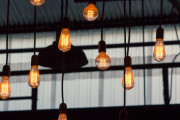 2020-09-14
2020-09-14
Nixon Peabody announced a major expansion of its groundbreaking patent enforcement campaign on behalf of the Regents of UCSB with new litigation against six leading retailers and suppliers of filament LED lighting products. Building on a successful first phase of the campaign, which was launched in 2019, Nixon Peabody filed a new complaint with the U.S. International Trade Commission (ITC) seeking an investigation into the unauthorized importation and sale after importation of UC’s patented filament LED lighting technology by General Electric, Savant Sy...
Continue reading →
 2020-07-20
2020-07-20
One critical issue of Micro LEDs is that their luminous efficiency decrease as their dimension shrink, leading to increasing problems in inspection and repair. Technology developers thus try to improve Micro LED efficiency at the phase of epitaxy wafer production. A group of researchers from UCSB, including Nobel winner Shuji Nakamura, recently published a paper describing the method of fabricating high performance InGaN Micro LED with epitaxial tunnel junctions (TJs Micro LEDs). Published in Optics Express, the paper, titled “Size-independent Low...
Continue reading →
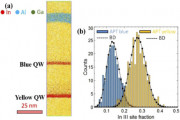 2020-06-15
2020-06-15
A new LED manufacture method which does not require phosphor to make white semipolar LED was published by a research team of UCSB with Shuji Nakamura, Nobel winner and LED pioneer, as a co-author. The result was published in Optics Express.
White light emitting LEDs are usually made from blue LEDs combining yellow phosphor. But phosphor converted white LEDs usually suffer energy loss and reduced thermal stability. Phosphor-free LEDs, however, are rather difficult to fabricate but the UCSB team proposed an easier method to achieve efficient and polari...
Continue reading →
 2020-06-11
2020-06-11
UC Santa Barbara researchers continue to push the boundaries of LED design a little further with a new method that could pave the way toward more efficient and versatile LED display and lighting technology. UCSB electrical and computer engineering professor Jonathan Schuller and collaborators describe this new approach, which could allow a wide variety of LED devices — from virtual reality headsets to automotive lighting — to become more sophisticated and sleeker at the same time. (Image: UCSB) Usually LEDs emit spontaneous light, comparing to...
Continue reading →
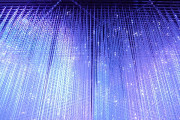 2020-04-20
2020-04-20
UC Santa Barbara’s Solid State Lighting & Energy Electronics Center (SSLEEC) and member companies are developing UV LEDs that have the ability to decontaminate surfaces — and potentially air and water — that have come in contact with the coronavirus (SARS-CoV-2 virus) to combat the world spreading disease.
Recently, much attention has turned to the power of UV light to inactivate the novel coronavirus and Seoul Semiconductor, a SSLEEC member company, reported its achievement of “99.9% sterilization of coronavirus (COVID...
Continue reading →
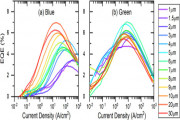 2020-03-30
2020-03-30
A team with researchers at Seoul Viosys and University of California Santa Barbara (UCSB) published a study focuses on features of Micro LEDs as their size goes smaller at 1 to 10 μm.
External quantum efficiency (EQE) of Micro LEDs usually reduces when Micro LEDs get smaller, which becomes an issue for Micro LED technology builders. To further understand the relation between EQE and chip size, a research team of Seoul Viosys and UCSB focus on Micro LEDs down to 1 μm to compare the EQE trend for blue and green InGaN Micro LE...
Continue reading →
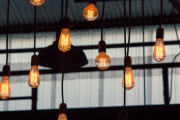 2019-12-30
2019-12-30
University of California Santa Barbara (UCSB) continues to guard its patent of filament LED by filing a new patent lawsuit against General Electric (GE).
According to a report covered by World Intellectual Property Review, the regents of UCSB filed a patent lawsuit at the US District Court for the Central District of California on December 20, claiming GE’s vintage LED bulbs products infringe three patents of UCSB.
(Image: Pixabay)
UCSB started to take legal action to secure its intellectual property since July, 2019, when the un...
Continue reading →
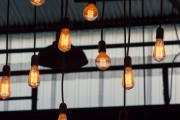 2019-12-03
2019-12-03
University of California (UC) Santa Barbara and LEDVANCE announce they have entered into a licensing agreement in UC Santa Barbara's patent enforcement campaign related to filament LED technology. The agreement authorizes LEDVANCE to manufacture and distribute the patented technology to lighting professionals, retailers and consumers.
On July 30, 2019, UC Santa Barbara launched a patent enforcement campaign against five major retailers to promote the respect of its patent rights covering foundational filament LED technology.
(Image: Pixabay...
Continue reading →
 2019-11-20
2019-11-20
Satco Products filed suit against The Regents of the University of California at Santa Barbara (UCSB) in the United States District Court of the Eastern District of New York to declare that the company does not infringe patents claimed by UCSB. In the press release of Satco, the company noted that it brought the legal action to seek a declaration that Satco Products, identified in the UCSB claim letters, do not infringe any of the ten patents asserted by UCSB. Satco also mentioned that it would aggressively defend its products and protect its custome...
Continue reading →
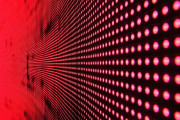 2019-08-30
2019-08-30
Intellectual properties are crucial for technology developers and manufacturers. As a result, the disputes for patented technologies continue to go on. This week, Japan’s Mitsubishi Chemical Corporation (MCC) announced its victory of patent infringement litigation and the U.S. International Trade Commission (ITC) has begun investigation for the patent infringement case raised by UC Santa Barbara.
MCC reported that on July 31 it obtained a judgement recognizing the infringement of its patent for red phosphor in China by the defendants, U.S.-based Intem...
Continue reading →
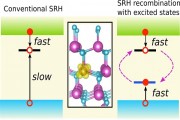 2016-11-04
2016-11-04
Using cutting-edge first-principles calculations, researchers at the University of California, Santa Barbara (UCSB) have demonstrated the mechanism by which transition metal impurities - iron in particular - can act as nonradiative recombination centers in nitride semiconductors. The work highlights that such impurities can have a detrimental impact on the efficiency of light-emitting diodes (LEDs) based on gallium nitride or indium gallium nitride.
Continue reading →
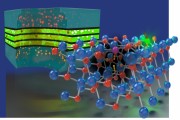 2016-04-07
2016-04-07
Using state-of-the-art theoretical methods, UCSB researchers have identified a specific type of defect in the atomic structure of a LED that results in less efficient performance. The characterization of these point defects could result in the fabrication of even more efficient, longer lasting LED lighting.
Continue reading →
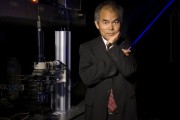 2015-04-24
2015-04-24
In recognition of his groundbreaking work in LED (light-emitting diode) technology, UC Santa Barbara materials professor Shuji Nakamura has been chosen as a 2015 Global Energy Prize Laureate. The prestigious Russian award “honors outstanding achievements in energy research and technology from around the world that are helping address the world’s various and pressing energy challenges.”
Continue reading →
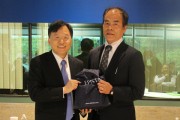 2015-04-09
2015-04-09
The upcoming LED technology will be GaN-on-GaN LEDs, affirmed Nobel Laureate in Physics Shuji Nakamura and fellow colleague at University of California, Santa Barbara (UCSB) Professor Steven DenBaars at an exclusive forum hosted by Taiwanese leading chip LED manufacturer Epistar on Wednesday at the company headquarters in Hsinchu, Taiwan.
Continue reading →
2014-04-25
Awarding efforts focused on everything from composting and energy conservation to lighting retrofits and weed management, UC Santa Barbara’s The Green Initiative Fund (TGIF) Grant Making Committee has selected its grant recipients for the 2013–2014 funding cycle.
Continue reading →
 2021-07-23
2021-07-23
 2020-09-14
2020-09-14
 2020-07-20
2020-07-20
 2020-06-15
2020-06-15
 2020-06-11
2020-06-11
 2020-04-20
2020-04-20
 2020-03-30
2020-03-30
 2019-12-30
2019-12-30
 2019-12-03
2019-12-03
 2019-08-30
2019-08-30
 2016-11-04
2016-11-04
 2016-04-07
2016-04-07
 2015-04-24
2015-04-24
 2015-04-09
2015-04-09